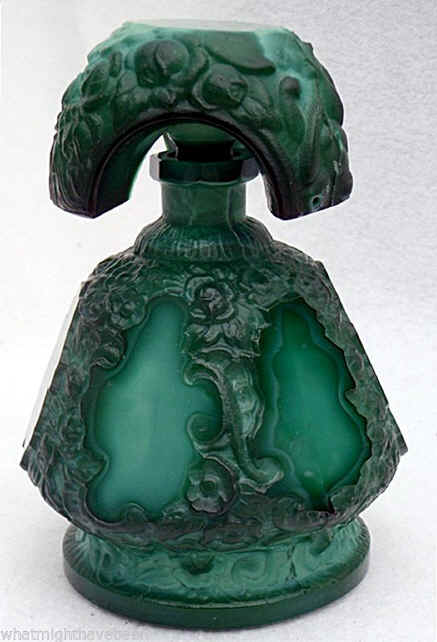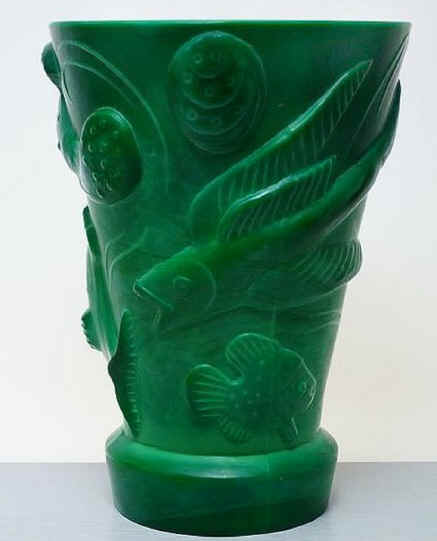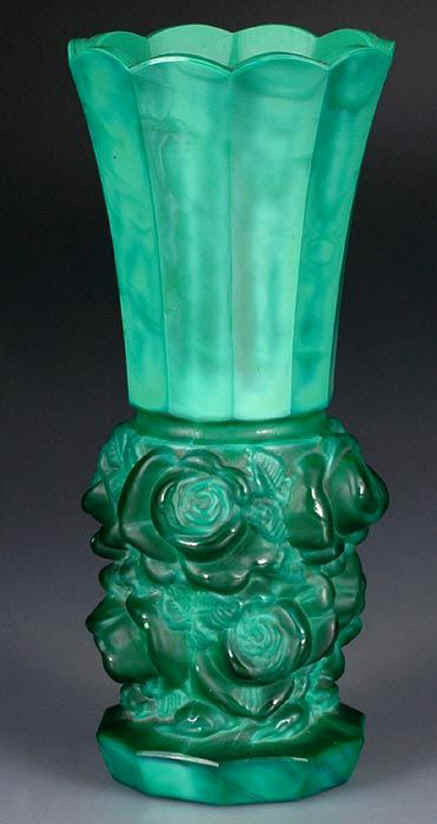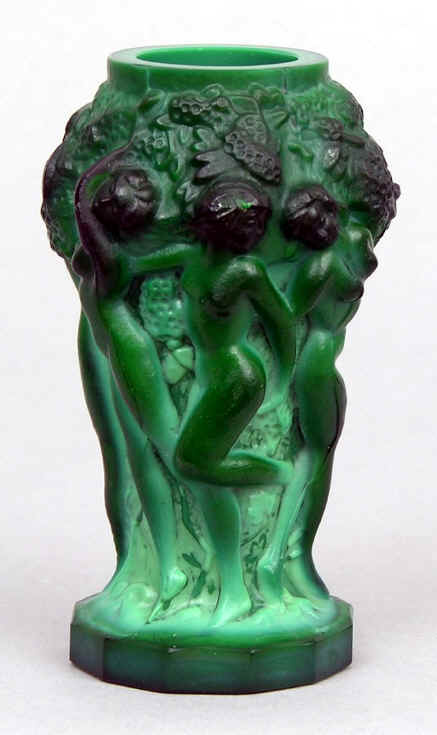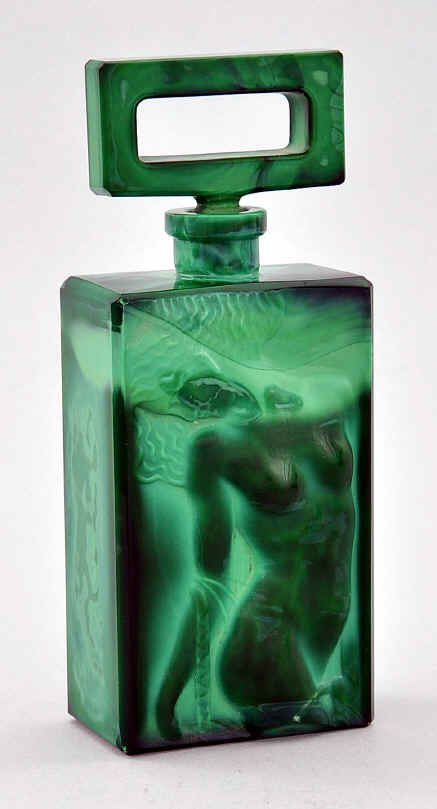|
The Shimmer of Mirror Glass By Bob Brooke
Ingrid is the name of a series of artistic pressed glass items created by Henry Schlevogt and named for his daughter. Henry was the son of Curt Schlevogt, who around 1900 founded a firm in Jablonec, Bohemia, to produce glass beads and buttons. His wife, Charlotte, was the daughter of Heinrich Hoffmann, the owner of a glass company that made and exported sculptures, beads and hollowware.
But Henry knew that the "beads and buttons" business was a difficult one because of the tough competition from so many companies in the area and from other countries. He wrote to his daughter, Ingrid, that knowledge he gained in other countries had led him to create items that were so beautiful that the price wouldnít matter.
Schlevogt reached out to designers working with the Wiener Werkstatte, including Franz Hagenauer, Ena Rottenberg, and Vally Wieselthier, and also to designers who worked for other major glass firms, such as Bruno Mauder, Eleon von Rommel, and Alexander Pfohl. The result was a complete line of ornamental sculptures, perfumes with figural daubers and/or impressed stoppers, liquor sets, toilet sets, devotional items, figurines, table ware, and vases. Henry Schlevogt utilized the technology at the Riedel glassworks in Polubny, Czechoslovakia, to make this artistic, marbled, pressed glass. But just because his firm pressed the glass into molds, didnít mean that it was of inferior quality. The glass, itself, was pure. Workers ground out the mold marks and frosted or polished the surfaces. They even engraved some of the details.
Schlevogt's crystal perfume bottles arenít as easily identified. Some appear in the firm's catalogs, but the vast majority have been included in the broad category of Czechoslovakian glass in most listings. The designs for perfumes included bottles in various Art Deco shapes, and stoppers with relief-pressed nudes, couples, flowers, and butterflies. At times, it can be difficult to distinguish between items made by the Hoffmann and Schlevogt firms. They both used the same designers and had their glass pressed at the Riedel factory. Henry Schlevogt had started to develop some of his ideas while he worked at the Hoffmann firm. Schlevogt took ownership of some of he molds he had worked on at the Hoffmann firm. While Hoffmann is known for his butterfly mark, Schlevogt included items with the Hoffmann butterfly mark in his catalogs.
The Czechoslovak government nationalized the glass industry after World War II and sentenced Henry Schlevogt to prison in Siberia. After his release in 1948, the Communist government in Czechoslovakia banished him. He first went to Austria, then accepted an offer to manage the glassworks in Romilly-sur-Andelle, France. He sold this firm in 1972 and died in Paris in 1984. The former Riedel factory in Czechoslovakia went through administrative changes imposed by the government. The Ingrid molds located at the factory continued to be used. New colors were introduced, including yellow, amethyst, pale blue, and pale green (these were not marbled). Interestingly, during the rebuilding years of the 1940s and early 1950s, raw materials for glassmaking were inconsistent in quality. The result was some "rare" colors because quality standards could not be maintained. Collectors need to be cautious, however, since the Ingrid molds have been used continuously. In addition, unauthorized versions of Ingrid items have been made from reverse-engineered molds. Illustrations from top to bottom: As an avid collector of a variety of antiques and collectibles for the last 20 years, Bob Brooke knows what heís writing about. Besides writing about antiques, Brooke has also sold at flea markets and worked in an antique shop, so he knows the business side too. His articles have appeared in many antiques and consumer publications, including British Heritage, Antique Week, Southeastern Antiquing and Collecting Magazine, www.OldandSold.com, and many others. To read more of his work, visit his main website at www.bobbrooke.com or his specialty antiques site at www.theantiquesalmanac.com |
